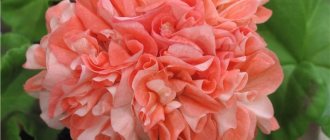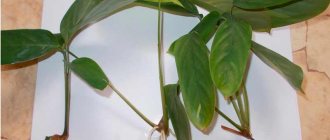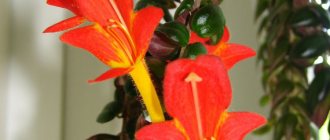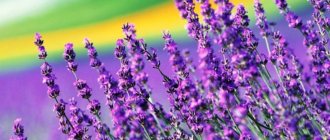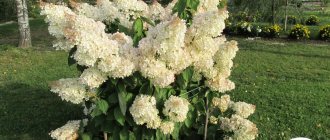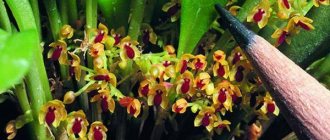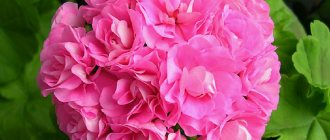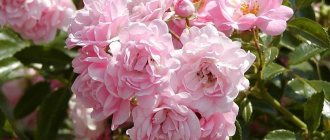Mimosa or Mimosa belongs to a genus of flowering plants from the legume family or Fabaceae. Until recently, Mimosa belonged to the disbanded family Mimosa or Mimosaceae. Mimosas can be represented by herbs, shrubs or medium-sized trees with bipinnate leaves.
Most often, the flower consists of four parts, but there are species with three or six parts. The inflorescences are represented by dense heads or racemes. The predominant place of growth is South America. More than 600 species are known and studied.
Main types
Shy or Mimosa pudica L
Prefers damp places and thickets. The main habitats are the lowlands of the Antilles and the territory of Brazil. The appearance corresponds to evergreen plants, subshrubs or shrubs with straight shoots up to one meter high. Characterized by the presence of spines and pubescence.
Small flowers are collected in heads at the top of the shoots. The predominant color is pink-violet. Flowering - in summer. Grown as an annual ornamental plant.
Rough or Mimosa scabrella
The birthplace of this twenty-meter plant is South America. The panicles of numerous flowers are painted white.
Photo gallery
Lazy or Mimosa pigra
An amazing perennial ornamental plant. Straight and branched shoots reach a height of 0.5 meters. White flowers are characterized by spherical heads. Fern-like leaves are highly sensitive.
Albizia in the garden. Albizia
Albizia - tropical trees and shrubs of the legume or mimosa family with pink inflorescences in the form of a ball or spike. The plant was brought to Europe by a botanist from Florence, Philip Albizzi. In nature, some types of albizia can reach a height of 20 meters or higher, while shrubby albizia are much lower - usually no more than 6 meters. Wild albizia can be found in almost all hot countries with tropical and subtropical climates, but Asia is considered its homeland.
The genus Albizia has more than 30 species, the most common being bunch-flowered and silk.
Mimosa propagation
- Seeds are often used for propagation, but mimosa cuttings can also be rooted. At the beginning of March, the seeds should be scarified, which is carried out according to certain rules, or doused with boiling water.
- Sowing of treated seeds is carried out in a substrate, which consists of two parts peat and part river sand.
- The planting depth of mimosa should not exceed 5 mm. Seeds germinate at a temperature of +25°C.
- Picking is done after two or three true leaves appear.
- The soil needs regular moistening.
Caring for mimosa in the room: 7 rules
Mimosa is thermophilic, the minimum winter temperature for it is -10 °C. In more severe climatic conditions, it freezes, which is why garden mimosa does not take root in most regions of Russia.
Lovers of this delicate plant grow mimosa indoors.
At home, mimosa pudica mainly grows as an annual.
Of course, the process requires some effort and knowledge, but the result is usually amazing. Mimosa not only takes root successfully, the plant also blooms and reproduces profusely.
Landing Features
In our climate zone, mimosa is grown in greenhouses and winter gardens. The plant is very heat-loving and light-loving. It is able to form a compact bush and bloom profusely only in the presence of bright sunlight.
The ideal landing location is the south side. To protect against sunburn, the tender leaves of mimosa are shaded, and after cloudy days they are gradually accustomed to bright light. Mimosa is characterized by relatively slow development and weak height gain.
The optimal soil for planting is a mixture of topsoil, peat, prepared humus and sand. All ingredients are taken in equal quantities. The bottom of the container must be equipped with drainage, which can be expanded clay.
Care Tips
- Mimosa prefers regular watering with soft and settled water. The signal for the next watering is the relative drying of the top layer of soil. The plant requires the most abundant moisture from spring to early autumn. Then watering is reduced, and by winter they move to a level of very moderate moisture.
- Mimosa is very sensitive to dry indoor air and responds positively to spraying with soft water.
- Feeding is carried out in spring and summer regularly twice a month. Fertilizers are not used in winter.
Growing and care
The tenderness, fragility, and sophistication of mimosa are purely external manifestations. In fact, mimosa is quite unpretentious and undemanding in care. The main condition is a mild, warm subtropical climate. In this case, it can be cultivated in open ground. But it is also grown indoors: greenhouses, conservatories, and winter gardens. It must be remembered that the plant has a negative attitude towards the effects of tobacco smoke. This can lead to complete loss of leaves.
The most comfortable temperature for mimosa growing season is within 20-24 degrees. In winter, adult plants easily tolerate small short-term frosts. But for young shoots and flowers they can be destructive. In winter, when cultivating indoors, the temperature must be reduced to 10ºC.
Like all plants that came to us from the hot tropics, mimosa is not afraid of direct bright sunlight. She feels great in illuminated areas, in bright, brightly lit rooms.
Acacias tolerate drought well, but during the growing season (spring, summer) they need regular moderate watering. She responds gratefully at this time to daily spraying of the leaves with warm water. But in cold weather, the soil should not be allowed to become waterlogged. You must constantly monitor the soil moisture, ensuring timely watering even in winter.
Bush varieties respond well to shaping, which allows them to be used when decorating areas. Plants do not have any special requirements for soil, but during flowering, which can last at least 4 months, it is advisable to regularly feed the bushes with organic and mineral fertilizers, approximately once every one and a half to two weeks. When grown in tubs, pots, and other containers in the warm season, they can be taken out into the open air.
Diseases and pests
- Excess moisture and overwatering cause yellowing of leaves.
- Irregular and insufficient watering can cause leaves to fall off.
- With a lack of light, plant stems tend to stretch and lose strength.
- Low temperatures affect flowering.
- Mimosa is most often affected by aphids and spider mites.
Application in landscape design
Any floral arrangements in landscape design must correspond to the general idea. In everyday life, mimosa is often confused with certain types of acacias belonging to another genus from the Mimosa subfamily. Mimosa and acacia are surprisingly similar in appearance.
Most often, instead of mimosa, silver acacia or Acacia dealbata is used in decoration. Twigs of this particular flowering plant are traditionally given as gifts on International Women's Day.
Mimosa pudica or touch-me-not can be easily distinguished by touching it with your hand. The response to such a mechanical effect is the folding of all the leaves. The leaves can open only after half an hour or an hour. This protective property is a sure sign of mimosa.
Japanese mimosa tree. Long-standing confusion: bashful mimosa vs silver acacia
In spring, in different cities of Russia you can see beautiful branches with silver leaves and bright yellow flowers on sale. They are often sold by March 8, and many people simply like to buy them for beauty. After winter you always want bright colors...
Silver acacia blooms... Photo from wallbox.ru
However, many people mistakenly call these twigs and flowers mimosa. This is a common mistake. I don't know exactly where it came from. But the name stuck (about the same as the zygocactus, called “Decembrist”). What kind of plant is this actually?
The tree whose flowering branches are brought to Moscow in the spring (usually from Abkhazia) is called silver acacia. The homeland of this plant is distant Australia, where it blooms at the end of summer (in the southern hemisphere), in the subtropics of the northern hemisphere in February-March. This is an evergreen tree with beautiful, slightly pubescent, silvery lacy leaves (hence the name). Its height reaches 45 meters!
Blooming silver acacia in Abkhazia. Photo from rg.ru
In our country, silver acacia grows in the Sochi region, in the coastal lowlands, without rising in the mountains above 400 meters. Closer to the border with Abkhazia, in places it forms wild thickets. But it grows most luxuriantly in Georgia, in Adjara - near Kobuleti and Batumi, since the climate there is even warmer and humid. The height of acacia on the Black Sea coast is up to 10-12 meters.
Blooming silver acacia tree. Photo from the site velootpusk.ru
Silver acacia is a very heat-loving plant, temperatures below -5 -8 degrees are considered critical; already at temperatures below -8 degrees the tree freezes to the level of the snow cover and is restored the next year with shoots. Therefore, in the same Sochi it is growing, mainly closer to Adler.
As for mimosa, there is such a plant too.
Mimosa is bashful. Photo from the site wikiznanie.ru
It is called bashful mimosa (when you touch the leaves, they fold, hence the name). This is a beautifully flowering perennial herbaceous plant (the leaves are somewhat similar to silver acacia) that comes originally from tropical regions of South America. But it is introduced and grown in many countries of tropical Africa and North America, in Asia.
Dear readers, do you like the bright yellow flowers of silver acacia?
Subscribe to the channel if you are interested, likes and reposts via social media are also welcome. networks.

